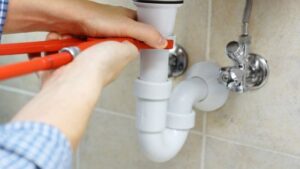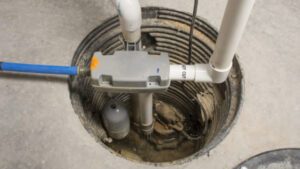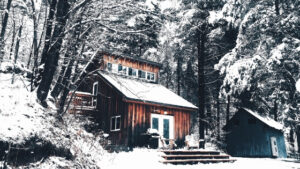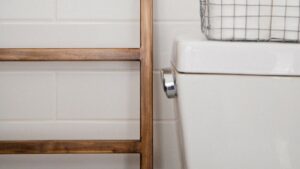 You should be concerned if one or more drains in your home are emitting a gurgling sound each time that drain or another one is used. While the sound can be annoying, it is actually a good thing because it draws your attention to a developing problem. Read on and discover why drains gurgle and what you can do to fix the problem on your own before calling the experts at Tureks Plumbing Services for help.
You should be concerned if one or more drains in your home are emitting a gurgling sound each time that drain or another one is used. While the sound can be annoying, it is actually a good thing because it draws your attention to a developing problem. Read on and discover why drains gurgle and what you can do to fix the problem on your own before calling the experts at Tureks Plumbing Services for help.
Where Does the Gurgling Come From?
One of the most important steps, before you can fix the gurgling sound in your plumbing, is finding out where the sound is coming from. You can get answers to this question by listening carefully as you use different drains. From this observation, Fox Valley plumbers recommend that you note down the specific drain or drains exhibiting this symptom.
When Does the Gurgling Occur?
Tureks Plumbing Services also recommends that you take note of when gurgling sounds are emitted. For example, one drain may gurgle each time it is used. It is also possible for a drain to gurgle when another plumbing fixture is used. A clear example of this is when you hear gurgling in the floor drain of your bathroom when you pour water down the kitchen sink drain.
What Gurgling from One Drain Means
When you talk to an Appleton plumber about the gurgling from just one drain, he or she will immediately suspect that there is either a partial clog or blockage in that drain, or there is a malfunction in the vent of that plumbing fixture, such as the kitchen sink.
Solutions to Gurgling in One Drain
First, use a plunger to try and dislodge the clog that is blocking the single drain emitting the gurgling sound. If you try to use the drain and the problem persists, then it may be time to switch to an auger. Be careful when using the auger because any mistake that you make can result in damage to the plumbing pipe.
If you aren’t certain of your ability to accomplish this task on your own, contact a plumber in Appleton, WI for help in using an auger to safely get rid of the clog.
The second alternative solution is suitable for gurgling due to defective venting. Here, what is required is to clean the p-trap of the fixture from which the gurgling sound is originating. Access the vent and clean it so that it can start letting air into the drain as water is flowing through.
If you find that the plumbing fixture doesn’t have a vent, now is the time to call a Fox Valley plumber and ask him or her to install a vent on this particular fixture and others without vents.
What Gurgling from Multiple Drains Means
You can hear gurgling sounds from several vents in your home if the main vent of the plumbing system has a problem, such as a bird’s nest blocking it or when it is constricted by a heavy object. Alternatively, gurgling from multiple vents may also result if the main sewer line has a clog or is damaged.
Solutions to Gurgling in Multiple Drains
You may have noticed that your home has a vertical pipe that runs to the roof of the house. This pipe is the main vent of the entire plumbing system. Tureks Plumbing Services explains that once this vent is clogged, then air will be unable to enter the plumbing pipes and several drains will begin gurgling.
The fix to this problem is to access the vent on the roof and remove any clog inside that vent. You can use a thin piece of tubing to push down any debris which has entered the vent. This may also be the time to put an elevated cover or mesh on the vent opening so that tree leaves and other forms of debris don’t enter the vent in future. You might want to hire a Fox Valley plumber to perform this task if you are afraid of heights or you find climbing onto the roof too risky.
The second solution involves unclogging the main sewer pipe if the main vent has no problem but you continue to hear gurgling from different drains. If you are up to the task and you have the necessary tools, such as a plumbing snake, you can open the nearest cleanout port and push the snake into the pipe until you dislodge the clog.
Calling Professional Fox Valley Plumber
However, you are better off asking a plumber in Appleton, WI to clear the pipe. This professional will inspect the pipe using a camera and identify the kind of blockage hindering the flow of wastewater. For example, tree roots may have penetrated the pipe and partially blocked it. This inspection will enable the plumber to use the most appropriate technique to get rid of the clog so that the gurgling sounds are brought to an end.
It is vital that you resist the temptation to ignore the gurgling sound coming from a drain or several drains in your home. Any delay to address the problem can allow the situation to deteriorate and a plumbing emergency, such as a burst sewer pipe, can arise. Don’t let matters get this far. Call Tureks Plumbing Services as soon as you notice gurgling in any drain and our expert plumbers will assess and resolve the situation.


 7 Signs You Need to Replace Your Sump Pump
7 Signs You Need to Replace Your Sump Pump


